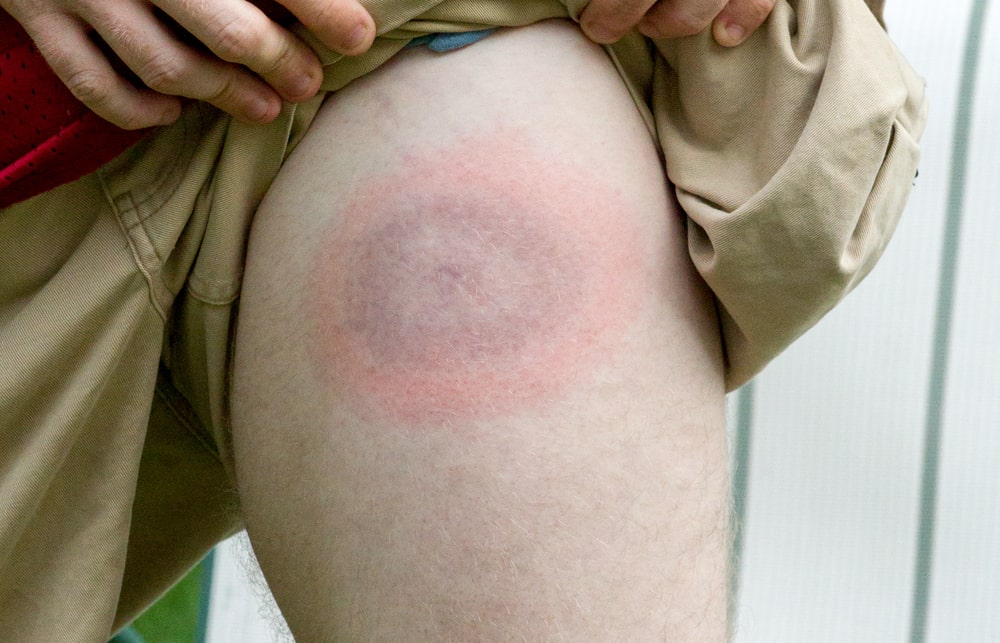The Internet is often flooded with the question Can Lyme Disease be cured and a considerable debate is seen on it. It is crucial to understand its vital facts to assist you in seeking an answer for it. The below-written article may help you seek an answer for Can Lyme disease be cured?
What is Lyme Disease?

The most prevalent vector-borne illness in the US is Lyme disease. The disease known as Lyme disease is transmitted by infected ticks of the genus Ixodes and spread to people through tick bites (commonly called deer ticks).
Tick bites spread the virus that causes Lyme disease in people. Ticks that can carry borrelia bacteria live throughout most of the United States. But Lyme disease is most common in the upper Midwest and the northeastern and mid-Atlantic states. It’s also common in Europe and in south-central and southeastern Canada.
What causes Lyme disease?
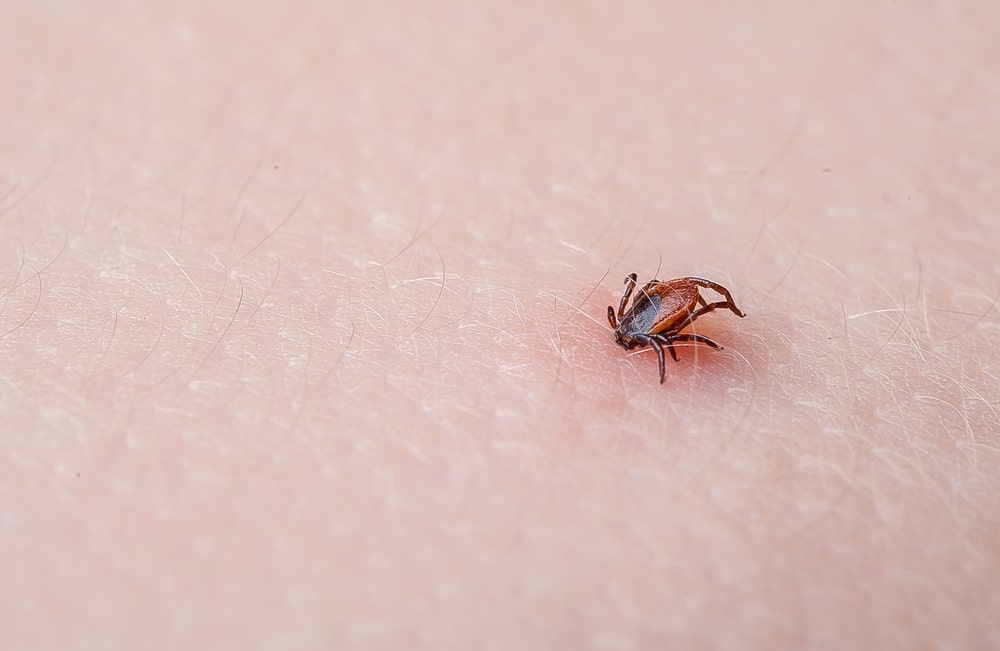
When people ask what ticks carry Lyme disease, the answer remains that the bacterium Borrelia burgdorferi and Borrelia mayonii are responsible for causing Lyme disease.
Through the bite of infected black-legged ticks, it is transferred among humans.
Read more to find out Can Lyme disease be cured and how.
How common is Lyme disease?

A common tick-borne disease is Lyme disease, especially in areas where ticks harboring the Borrelia burgdorferi bacteria are widespread.
In addition to portions of Europe and Asia, the northeastern, mid-Atlantic, and north-central United States are the regions where Lyme disease is most prevalent. But there have also been reports of instances in other areas.
According to the World Health Organisation (WHO), the most prevalent tick-borne illness in the Northern Hemisphere is Lyme borreliosis, the medical term for Lyme disease.
Approximately 30,000 cases of Lyme disease are reported to the Centres for Disease Control and Prevention (CDC) each year in the United States. Since many cases go unreported or untreated, some estimates suggest that the true number of cases may be significantly higher.
The spirochete Borrelia burgdorferi infection is what causes Lyme disease. Risk factors for being bitten by a tick include the following in areas of the US where Lyme disease is prevalent:
- A lot of time spent outdoors
- Proximity to regions where there are lawns and forests, especially if there are low-lying grasses or shrubs in those areas
Cases of Lyme disease normally increase in May and June, during the warmer months when tick activity is at its highest. On the other hand, incidents can happen all year round, particularly in areas with moderate winters.
Epidemiological Trends: The CDC’s surveillance data shows that over the past few decades, Lyme disease incidence has been rising. For instance, from about 16,000 instances in 2001 to over 42,000 cases in 2017, the number of cases reported in the US more than doubled.
It’s crucial to remember that there are probably more cases of Lyme disease than are officially recorded. Due to things like mild or unusual symptoms, restricted access to healthcare, and difficulties in diagnosing the illness, a large number of cases remain unreported or undetected.
Lyme Disease Symptoms:
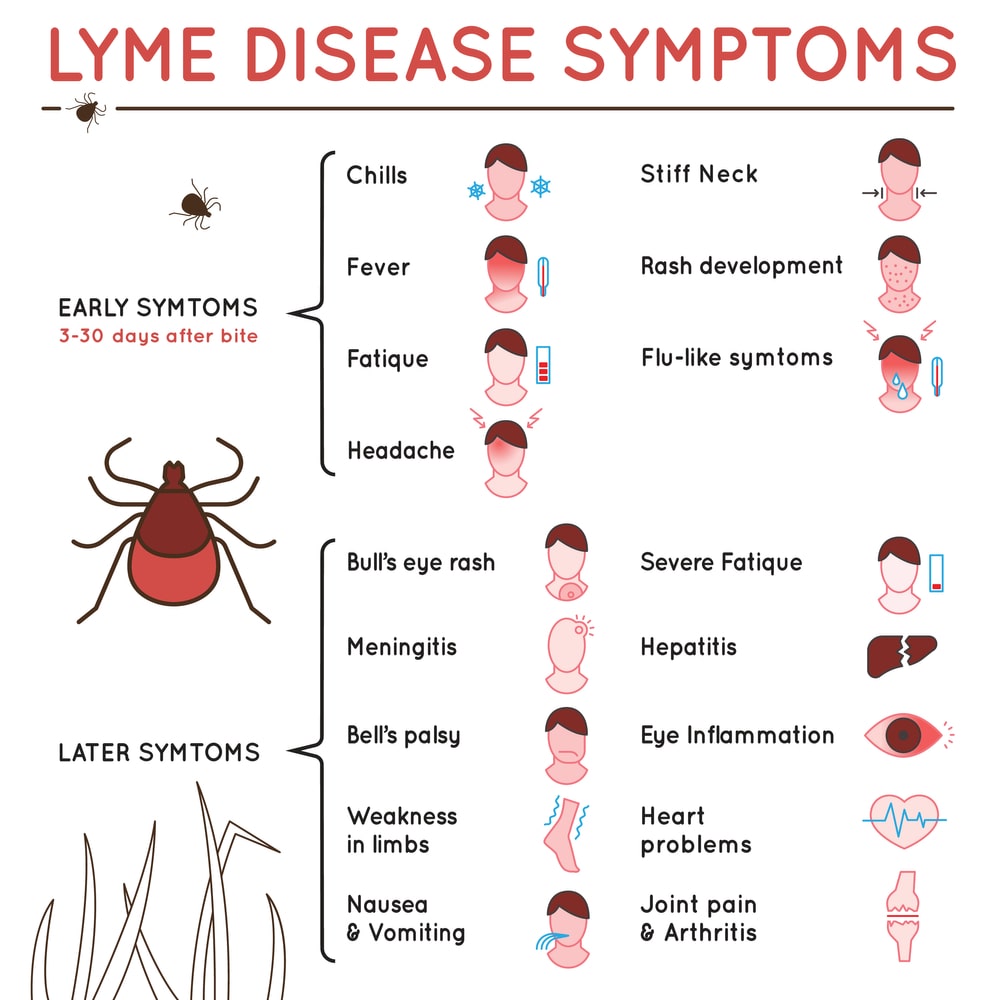
Depending on the disease’s stage, Lyme disease symptoms change. Early Lyme disease signs and symptoms include fever, headaches, exhaustion, and an erythema migrans-like skin rash. Some other unusual symptoms of Lyme disease which can be seen are:
- Flu
- Fever/Chills
- Ill feeling (malaise)
- Joint and muscle discomfort
- Headache
- Enlarged glands
- Neck discomfort
- Eye redness and tears
- Conjunctivitis (uncommon)
- Muscle inflammation in the heart
- Cardiac irregularities
- Harm to the brain nerves
The most prevalent symptom in people with advanced stages of the disease is arthritis, which usually affects major joints, particularly the knee. Warmth, swelling brought on by fluid, and restricted range of motion are all other signs of Lyme arthritis. Read more to find out Can Lyme disease be cured.
Lyme Disease Rash:

A rash is a typical Lyme disease symptom. However, it only sometimes occurs. The rash often begins as a circle and slowly spreads from the tick bite site. The center could grow distinct and resemble a target or bull’s-eye. Although the rash frequently feels warm to the touch, it usually isn’t uncomfortable or unpleasant.
Where the tick bite happened, erythema migrans is a rash that appears. After being bitten, the rash often appears within a month. It is red in color, although the person’s regular skin tone may be seen in the center. Over a few days, the rash can worsen and appear as a “bull’s eye” appearance.
Stages of Lyme Disease:
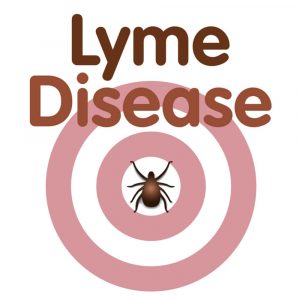
There are three stages of Lyme disease:
- Localized: It takes place a few days after the tick bite. The tick bite site will be red and irritated, and you may also experience flu-like symptoms like fever, chills, and muscular pains. There aren’t many symptoms present at this stage of the disease.
- Disseminated: Stage 2 is frequently more severe and pervasive—many rashes on various body areas. Within a few weeks of a tick bite, something gets disseminated. If the Infection is left untreated, it spreads to other bodily regions. It causes additional symptoms like neck stiffness or discomfort, weakness in the facial muscles, irregular heartbeats brought on by immune system activation, leg pain that originates in the back and hips and spreads, and numbness in hands or feet suffering from pain.
- Persistent Infection that develops years or even decades after the initial tick bite is persistent. In this stage, arthritis and neurological problems are frequent. It is the stage where symptoms get worse; usually, some unusual symptoms can be seen among patients.
Can Lyme disease be cured? Yes, it is if it is detected in earlier stages.
Lyme Disease Diagnosis:
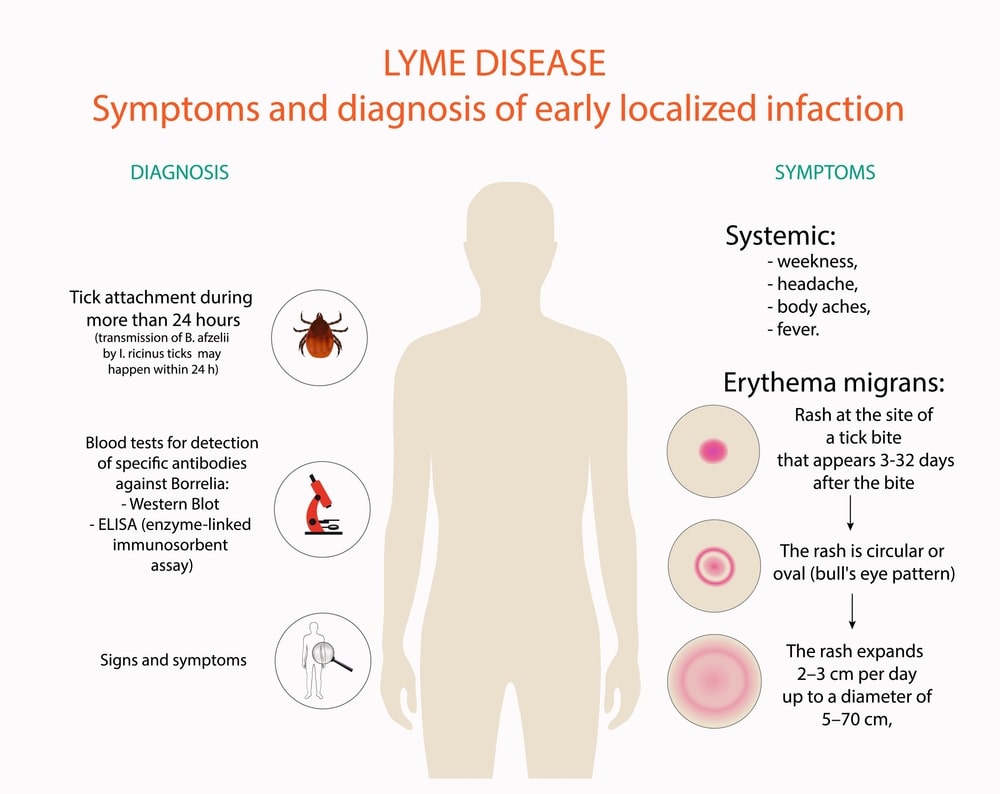
The rash alone can be enough to diagnose Lyme disease in areas where it is prevalent is a simple answer to how to test for Lyme disease.
The potential risk of exposure to infected ticks, physical signs (such as a rash), and symptoms all contribute to Lyme disease diagnosis. While screening for Lyme disease, considering the following factors is crucial:
- The symptoms and indicators of Lyme disease
- The possibility that the patient has come into contact with infected black-legged ticks
- The potential for comparable symptoms to arise from unrelated conditions
Laboratory testing is beneficial if carried out correctly and according to proven procedures. The CDC now advises the two-step Lyme disease testing procedure. The same blood sample can be used for both stages, which are both necessary.
No more testing is advised if the results of this initial phase are negative. The second step should be carried out if the result of the previous step is positive, and if the second test is also positive, the accurate result be considered positive. Can Lyme disease be cured, Lyme Disease Diagnosis does make it clear.
How is Lyme Disease treated?
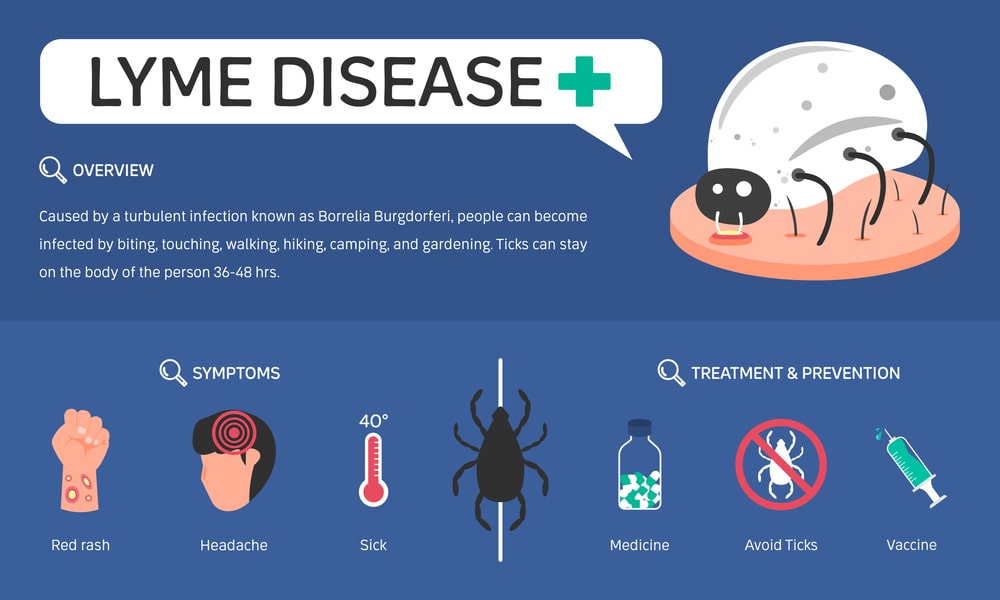
When people are observed hunting for an answer that can Lyme disease be cured the answer is yes. With a few weeks of antibiotics, the majority of cases of Lyme disease can be successfully treated. Early Lyme disease diagnosis and appropriate antibiotic treatment are crucial for preventing late Lyme disease.
Usually, oral antibiotics for Lyme disease lasts between 10 to 21 days to treat early-stage Lyme disease. These drugs consist of:
Lyme disease frequently requires more rigorous therapy in the early disseminated and persistent late stages, especially if severe neurological symptoms develop. Can Lyme disease be cured, yes it is, if it is detected earlier and given proper treatment.
The recommended doxycycline dose for Lyme disease is a dose of 200 mg per day, split into two doses of 100 mg each in the morning and evening.
These medications are easily accessible at Life RX Pharmacy. It is an entirely safe and secure online pharmacy store which operates similarly to any other traditional pharmacy. Life RX Pharmacy aims to provide prescription medications at a reduced and discounted price.
It is the most trusted online platform which offers branded as well as generic medications at a discounted price with advanced customer service and free to standard shipping charges.
Lyme Disease’s long-term effects:
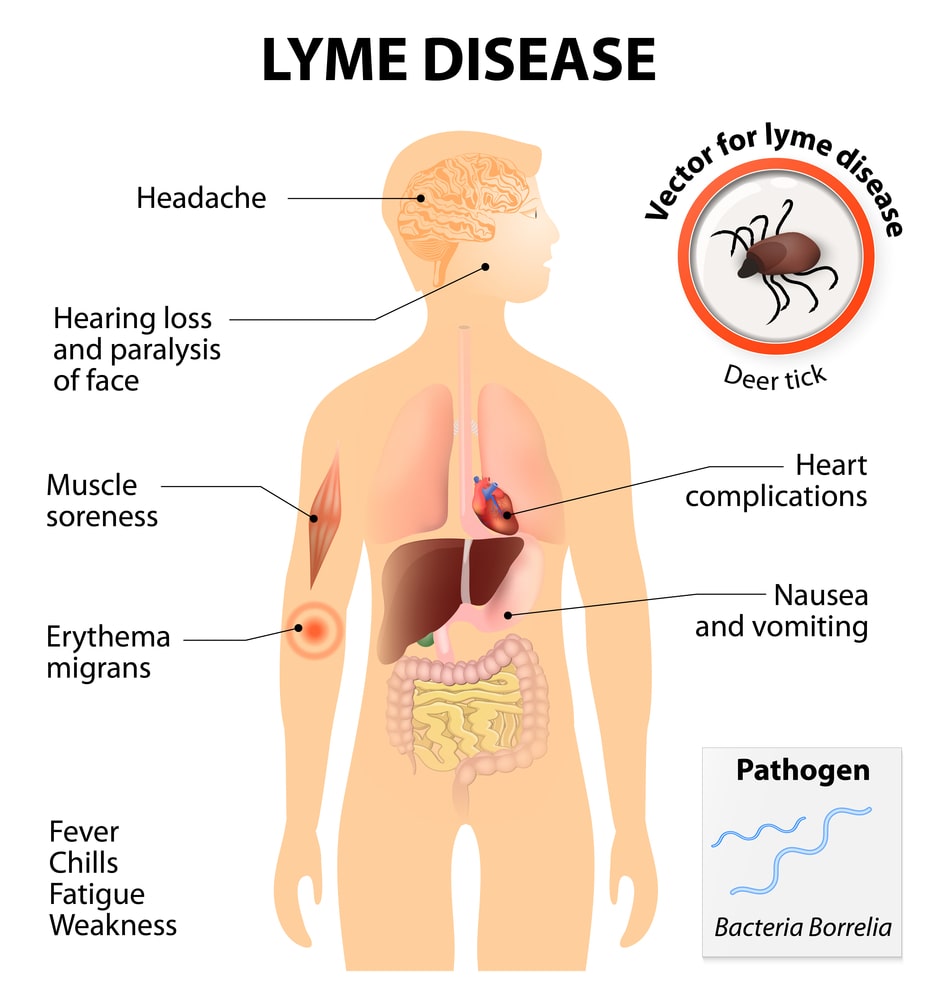
Can Lyme disease be cured!! Yes, it can be cured and Lyme disease does not significantly impact your life over time compared to other medical issues.
Whether dealing with Lyme disease or not, maintaining a healthy lifestyle is crucial. Research states that Lyme disease, if not diagnosed and treated on time, can show symptoms that will stay for a long time in the body, causing long-term effects.
These symptoms include exhaustion, discomfort, insomnia, and depression, and do certainly last for lengthy periods for some people.
Post Treatment Lyme Disease Syndrome:
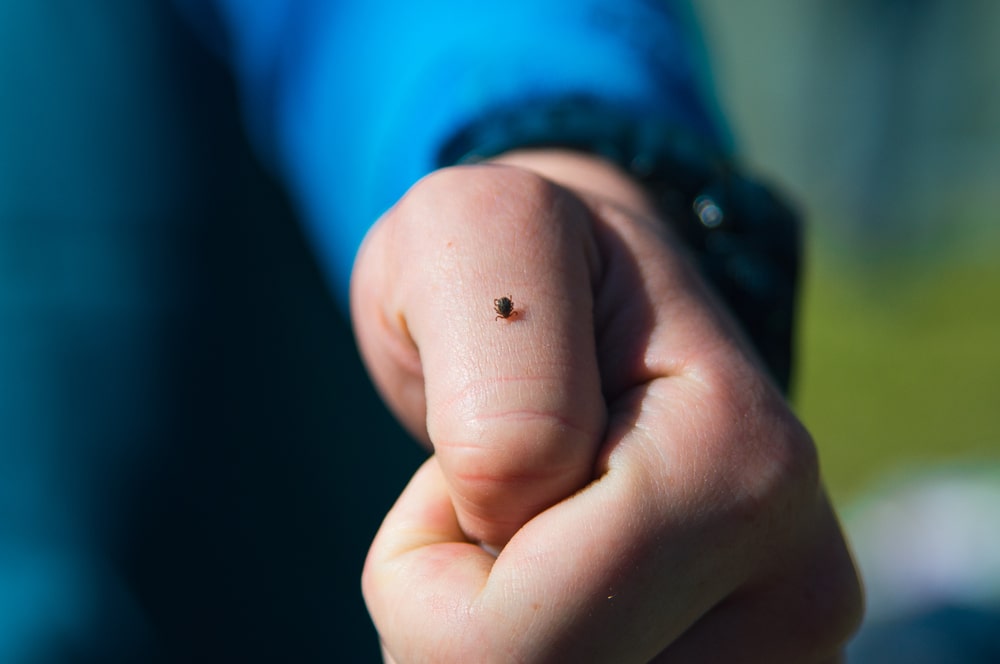
If you contracted Lyme disease by the bite of a pathogenic tick, you are more likely to develop post-treatment Lyme disease syndrome. Your symptoms may last for weeks, months, or even years following the initial tick bite if the Infection evolves to the chronic stage.
A condition known as Post-Treatment Lyme Disease Syndrome (PTLDS) or chronic Lyme disease, in which individuals experience symptoms more than six months after stopping treatment, is the most common complication of Lyme disease. PTLDS has no known cure, and recovery from the condition might take many months.
PTLDS symptoms include:
- Exhaustion that could endure for years. Severe headaches and extensive muscle aches may accompany it.
- Painful joints and arthritis
- Short-term memory and reasoning issues
Lyme Disease Prevention:

To avoid developing Lyme disease, one must stop ticks from attaching to the skin:
- Wear protective clothing.
- Permethrin can be used to pre-treat clothing (an insecticide)
- Use a product that kills or repels ticks. Tick bites can be avoided using insect repellents with the active chemicals DEET, IR3535, or picaridin.
- When returning from the outdoors, check your clothing and skin for ticks.
- After being outside, dry your clothing in the dryer to help kill ticks.
- Shower right away after a possible tick exposure (within two hours)
If you reside in a region where Lyme disease-carrying ticks are common:
- Build a high fence to exclude deer, which spread ticks.
- Keep your yard mowed.
- Apply tick-killing products to the property (such as bifenthrin or permethrin)
Lyme Disease can be prevented with proper measures Can Lyme disease be cured, Yes with proper care.
Can Lyme Disease be cured?

To answer the question, Can Lyme disease be cured? It is essential to understand what the term cure means. Once treatment is finished, a cure means that Lyme disease symptoms will never return, whereas if it returns and gets better with medications and treatment, it means remission.
In a cure, the immune system and herbal or prescribed antibiotics collaborate to eliminate any Lyme bacteria in the body.
Remission denotes a person is recovered following treatment, although the Lyme bacteria are still present in the body. When the condition is in remission, the immune system keeps the remaining pathogens under control on its own or with assistance from good nutrition, supplements, and an active lifestyle, that act as germ suppressants. There is always a risk that after remission, the Lyme bacteria will reactivate and cause a recurrence.
Lyme Disease Life Expectancy:

Long-term Lyme disease has less of an impact on your life than other illnesses. Whether dealing with Lyme disease or not, maintaining a healthy lifestyle is crucial.
Lyme disease impacts every organ in the body, including the heart, neurological, brain, and digestive systems. Due to secondary diseases, patients with Lyme may have a shorter life expectancy.
Is Lyme Disease Contagious?

You might worry if Lyme disease spreads if you hear about an increase in cases in your neighborhood. Although the germs conveyed by a tick bite, the most frequent sickness brought on by insect bites in the United States, cannot be spread from one person to another by regular contact like sharing a room or kissing.
However, there are a few additional ways that Lyme may spread from one person to another. It isn’t very likely, though.
Like the flu or a cold, Lyme disease is not spread via contact and is not contagious. It is Black-legged tick bites carry the bacterium and are the cause of Lyme disease (deer ticks). Hope this answers your question about Can Lyme disease be cured and Is it contagious.
FAQs:
Can Dogs get Lyme disease?
A black-legged tick can carry the bacteria Borrelia burgdorferi, which can cause Lyme disease in dogs. When sick, dogs may develop a fever and one or more joint lameness. Additionally, they could appear lazy, and their lymph nodes might enlarge.
Do all ticks carry Lyme disease?
No, not every tick is a Lyme disease carrier. Only the western black tick and the black-legged deer tick contain the germs that cause contagious Lyme disease.
Do Dog ticks carry Lyme disease?
The deer tick is the only tick to carry and spread Lyme disease (also known as a black-legged tick). Contrary to popular belief, dog ticks, Lone Star ticks, and other tick species are not known to transmit the pathogen that causes Lyme disease. But Dog ticks can cause Rocky Mountain spotted fever, which can be dangerous and even fatal.
Can Cats get Lyme disease?
Cats can indeed contract Lyme disease, but this is less common than in dogs or people. Because they groom themselves meticulously and frequently remove ticks before they have an opportunity to spread the bacteria that causes Lyme disease (Borrelia burgdorferi), cats are less prone to the disease than dogs. Nonetheless, a cat may get an infection if a tick can remain attached to them long enough to spread the bacterium. Fever, lameness, lethargic behavior, appetite loss, and enlarged lymph nodes are some of the signs and symptoms of Lyme disease in cats. Cats may not exhibit any symptoms at all in certain situations.
How do you know if you have Lyme disease?
The potential exposure to infected ticks, physical signs (such as a rash), and symptoms all contribute to Lyme disease diagnosis. Fever, headaches, exhaustion, and the distinctive skin rash known as erythema migrans are typical symptoms. Joints, the heart, and the nervous system can all get infected if untreated.
Is Lyme Disease fatal?
Even while Lyme disease seldom poses a life-threatening threat, delaying treatment may cause the condition to worsen. People should speak with their doctor if they get a distinctive rash or any other potential symptoms to avoid any critical or emergency that can lead to persistent Lyme disease. Can Lyme disease be cured, yes with earlier detection and proper care?
How is Lyme disease transmitted?
The tick bite of an infected animal transmits the Borrelia burgdorferi bacteria that causes Lyme disease. The disease is transmitted in the northeastern, mid-Atlantic, and north-central United States by the black-legged tick (also known as the deer tick, Ixodes scapularis).
Is Lyme disease an autoimmune disease?
Although Lyme disease is not considered an autoimmune illness, evidence suggests that it may cause an autoimmune reaction, and its symptoms may resemble an autoimmune disease. It is an infectious disease brought on by the bacteria Borrelia burgdorferi. When the immune system of the body unintentionally targets its tissues, it can result in autoimmune illnesses, which cause inflammation and tissue damage. On the other hand, the Borrelia bacteria, an external pathogen, causes Lyme disease and sets off the body’s immune system to combat the infection. Still, Lyme disease can occasionally result in consequences or symptoms similar to autoimmune diseases. For example, some individuals with untreated or inadequately treated Lyme disease may develop chronic symptoms such as joint pain, fatigue, and cognitive difficulties, which can resemble autoimmune conditions.
Is there a vaccine for Lyme disease?
There isn’t a vaccine for Lyme disease currently. LYMERix, the only vaccination that had previously been sold in the US, in 2002, alleging a lack of consumer demand is being stopped by the manufacturer. With time, this vaccine’s protection becomes less effective. Another Lyme disease vaccine candidate undergoing clinical testing at this time is VLA15.
Where did Lyme disease come from?
It is the outcome of ecological modifications that made it possible for deer, parasites, and, ultimately, bacteria to infiltrate. The bacterium Borrelia burgdorferi and, less frequently, Borrelia mayonii are responsible for Lyme disease. People contract it by infected black-legged ticks that bite them.
Can Lyme disease be transmitted sexually?
There is no strong scientific evidence that sexual activity spreads Lyme disease.
Does Lyme disease go away?
It grows for a few days to a few weeks before dissipating. Additionally, a person may experience flu-like symptoms like fever, fatigue, headaches, and muscular pains. Initial disease symptoms could go away on their own. However, in some individuals, the illness spreads to other body parts, necessitating an antibiotic treatment strategy. Can Lyme disease be cured, yes with earlier detection and proper care?
What Does Lyme Disease Look Like?
A skin rash that resembles a “bull’s eye” is the most typical early indication of Lyme disease. The first sign is a reddish spot close to the tick bite. The rash gets more evident in the middle as it gets bigger and gets a crimson ring around the edges. A person may also have several rashes with fever and flu-like symptoms.
Can Lyme disease be cured?
Yes, Lyme disease can be easily cured with a treatment of antibiotic regimen if diagnosed and treatment is started at an earlier stage.
